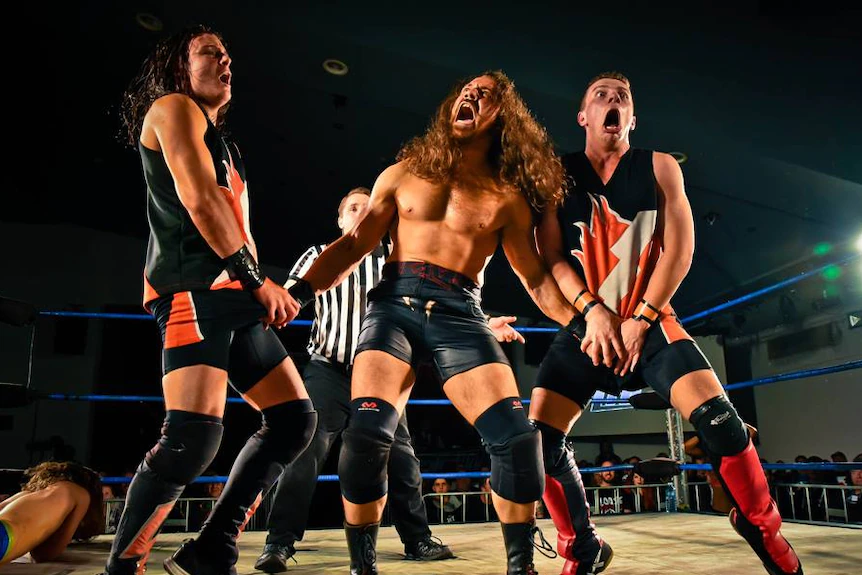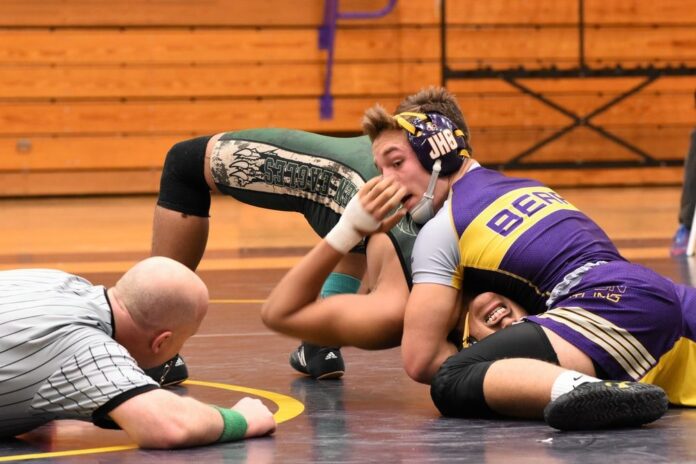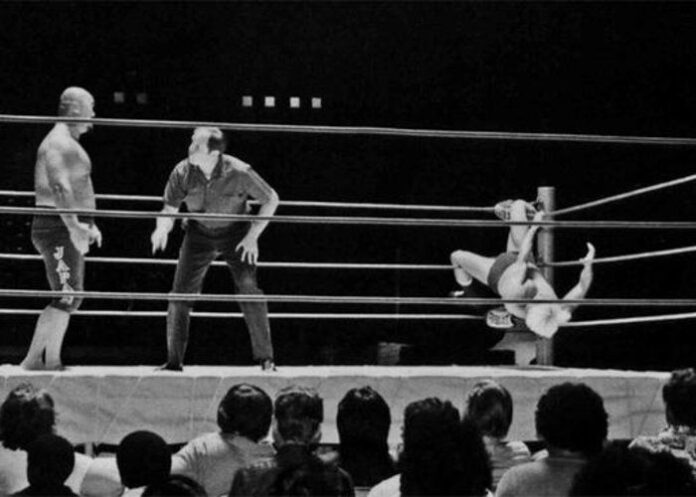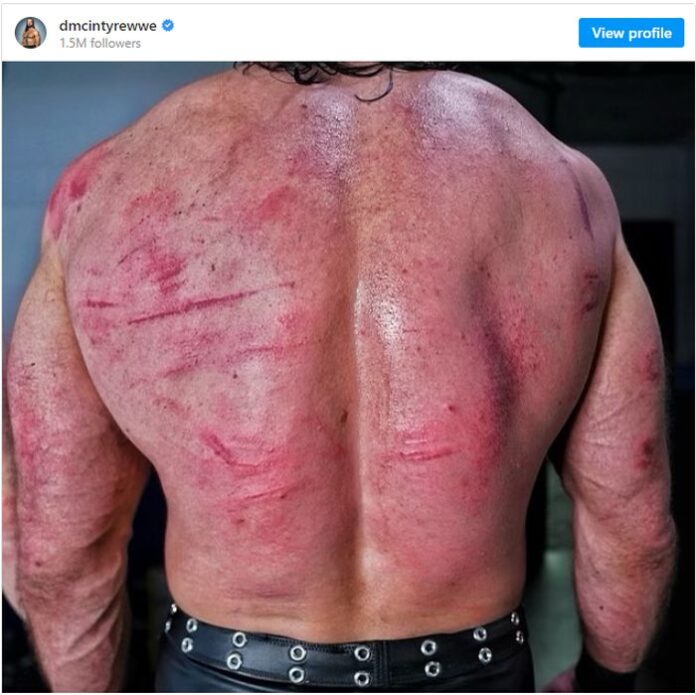Professional wrestling, pro-wrestling, or in recent days, Sports Entertainment, has been a part of mainstream media for more than five decades. Wherein men and/or women in tights go inside a ring and beat each other up for the entertainment of the audience. These competitors battle it out with flashy moves until one pins his/her opponent on the mat at the count of 3 to win the match.
Professional Wrestlers come from several backgrounds like amateur wrestling, football, and sometimes even acting. These athletes work at a tight schedule hosting house shows and live events. The average might ask why do these athletes put their bodies on the line just for mere entertainment, and does performing these acts take a toll on one’s body. The general audience might already know that pro matches are predetermined, but pro is much more than that.
The golden and forbidden question is: Is pro-wrestling fake?
The answer is more complicated than it seems, and the answers to this question will be discussed in the next few sections of this article.
The History of Professional Wrestling
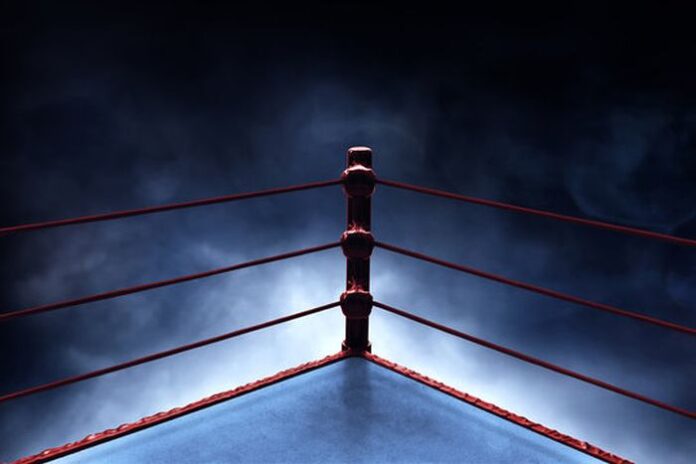
Believe it or not, the first traces of wrestling events predate some ancient text. Historians have discovered that wrestling has already been around during the times of the Sumerians which is over 5000 years ago. Drawings from ancient Egypt have been discovered to portray wrestling complete with referees and established rules. There were several ancient civilizations that practiced this, like the Greeks during the 708 BC ancient olympic games.
Wrestling has evolved as time went on until the first Professional Wrestling match in France around 1830. These wrestlers are basically circus performers that beat-up each other for real with rules not to execute holds below the belt. This new style of this was called “Flat Hand Wrestling” These shows drew in a lot of audience with circuses being able to advertise and arrange matches. As more and more audiences came to these events, more money came in, and it evolved to a physical sport.
Entertainment was truly the foundation of these events, but when Flat Hand became even more popular across the globe, another style was born: Greco-Roman wrestling, also called French wrestling, or classic wrestling. As time went on, this style became immensely popular and began to be more structured, and has stemmed to a style that is very similar to what we know today as amateur wrestling. Eventually being called freestyle wrestling, and being professionalized to the point that it was being integrated into the olympics, and is being taught in schools as extra curricular activities.
On the other hand, in the late 19th century, another wrestling style has stemmed from the Greco-Roman, with a mix of showmanship, and a much more unorthodox style called Catch-As-Catch can style. At the turn of the 20th century this style evolved to the modern wrestling we know today, but with the outcome not being predetermined. Eventually, promoters realized that more profits can come in if matches are rigged. If promotions can create top stars that can draw crowds, if storylines were created, if rivalries and factions exist, anticipation and hype can be manufactured.
With widespread fandom, several countries followed suit such as Australia- which had WCW Australia during the 1960s and 1970s, Japan – with New Japan and All Japan promotion that boast more technical and flashy moves, Mexico – with Luchador culture, Russia – leaning more on dangerous acts and hardcore matches, and of course the UK and US – with the WWF, now WWE, and several other wrestling promotions that are similar to the sports entertainment we have today.
Modern Professional Wrestling
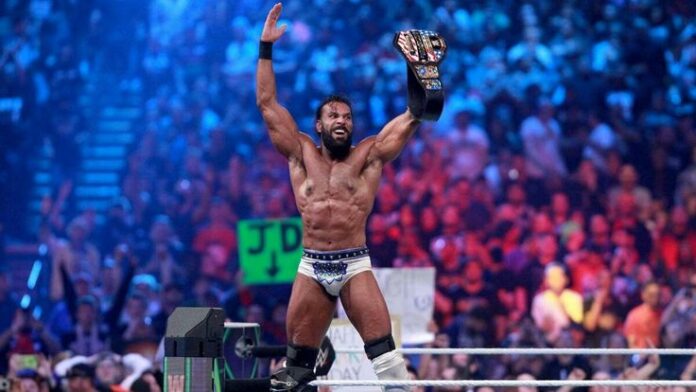
To get it out of the way – Professional Wrestling is SCRIPTED.
Although, for several years, promoters have kept it a secret from the public that everything that happens in the pro wrestling scene is real. Everyone involved used a code word called “kayfabe” as a warning to everyone in the industry that someone who doesn’t know, or not involved with the promotion is within the area.
In 1989, Vince McMahon, then spokesperson and now chairman of WWE or World Wrestling Entertainment shattered this illusion. Vince McMahon had testified before the New Jersey State Senate that pro wrestling was nothing more than entertainment. That all matches are a choreographed performance instead of a legitimate competition, so that wrestling can be deregulated. This deregulation bill passed the senate and the cat is now out of the bag.
Is Pro-Wrestling Fake?
Pro-wrestling is not a legitimate sport. It’s not like amateur wrestling wherein athletes can bring home an olympic gold medal like Gable Steveson, which is by the way set to retire amateur wrestling all-together and has been teased to be in the WWE soon. It’s not like boxing where punches are real and the titles are prestigious just like when Tyson Fury won the WBC and The Ring magazine titles (lordping.co.uk). However, pro-wrestling is not “FAKE”.
Vince McMahon answered this question in 1985 saying: “…I hasten to say that we’re in the sports entertainment field. It’s not important to determine what wrestling is or not. It doesn’t fall into one particular category. It’s not in the category of sport, in the strictest sense of the word.”
Fake is not the correct word to use in these circumstances. Films and theater productions have never been called fake. With larger than life characters and personalities, athletes not using their real names, matches that look flashy but not at all real – the correct word to use here is FICTION. The hazards to this kind of entertainment are real. It has a whole room of creative writers to develop a storyline that would draw in crowds. It’s basically a deadly form of theater.
In contrast to films with stuntmen, these performers do stunts in a single take. Taking bumps still hurts. Jumping across the ring into a pile of steel chairs hurt. Matches and events may be choreographed to make matches as safe as possible, but it is still physically taxing and has a huge risk of injury.
In an excerpt from “A Chosen Destiny”, Drew McIntyre, former WWE Champion wrote: “I learned everything from these books: how things are created, the way matches are structured. It tapped into the psychology of a live crowd and explained the secret words used by wrestlers among themselves.”
The dawn of social media may have diminished the mystique of gimmicks and characters, but at the end of the day, pro-wrestling is an artform. It’s not “fake”, it’s fiction. Actors playing roles in the longest running episodic live TV program that is more dangerous than any show that has hit the small screen.
Wrestling is scripted. Wrestling has predetermined outcomes. Wrestling is entertainment.
